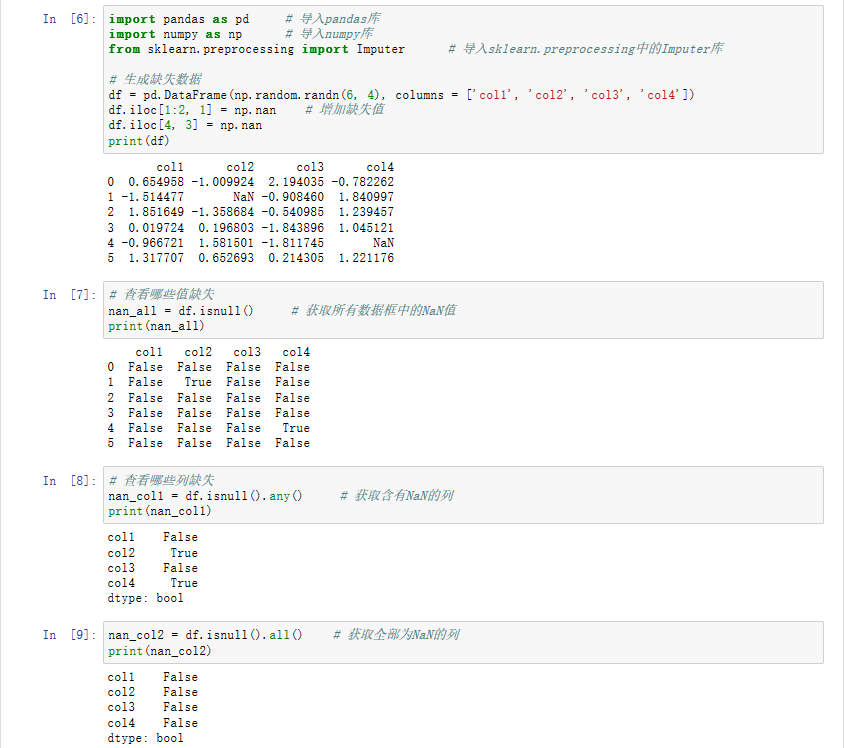我想用python的多模块共享不同的子进程之间的几个numpy的阵列。 我想阵列是单独可锁定的,并希望我在运行时被动态地确定阵列的数目。 这可能吗?
在这个答案 ,JF塞巴斯蒂安勾画出使用Python的numpy的阵列共享内存,同时多处理的好方法。 该阵列是可锁定的,这就是我想要的。 我希望做一些非常相似,除了与共享阵列的可变数目。 阵列的数目将在运行时确定。 他的示例代码是非常明确和做几乎正是我想要的,但我不清楚如何来声明一个变量数量这样的阵列,而不给他们每人一个硬编码名称,比如shared_arr_1 , shared_arr_2 ,等等。 什么是这样做的正确方法?
原来,这是比我想象的更容易! 继JF Sebastian的鼓励,这是我的一个答案破解:
import time
import ctypes
import logging
import Queue
import multiprocessing as mp
import numpy as np
info = mp.get_logger().info
def main():
logger = mp.log_to_stderr()
logger.setLevel(logging.INFO)
data_pipeline = Image_Data_Pipeline(
num_data_buffers=5,
buffer_shape=(60, 256, 512))
start = time.clock()
data_pipeline.load_buffers(data_pipeline.num_data_buffers)
end = time.clock()
data_pipeline.close()
print "Elapsed time:", end-start
class Image_Data_Pipeline:
def __init__(self, num_data_buffers, buffer_shape):
"""
Allocate a bunch of 16-bit buffers for image data
"""
self.num_data_buffers = num_data_buffers
self.buffer_shape = buffer_shape
pix_per_buf = np.prod(buffer_shape)
self.data_buffers = [mp.Array(ctypes.c_uint16, pix_per_buf)
for b in range(num_data_buffers)]
self.idle_data_buffers = range(num_data_buffers)
"""
Launch the child processes that make up the pipeline
"""
self.camera = Data_Pipeline_Process(
target=child_process, name='Camera',
data_buffers=self.data_buffers, buffer_shape=buffer_shape)
self.display_prep = Data_Pipeline_Process(
target=child_process, name='Display Prep',
data_buffers=self.data_buffers, buffer_shape=buffer_shape,
input_queue=self.camera.output_queue)
self.file_saving = Data_Pipeline_Process(
target=child_process, name='File Saving',
data_buffers=self.data_buffers, buffer_shape=buffer_shape,
input_queue=self.display_prep.output_queue)
return None
def load_buffers(self, N, timeout=0):
"""
Feed the pipe!
"""
for i in range(N):
self.camera.input_queue.put(self.idle_data_buffers.pop())
"""
Wait for the buffers to idle. Here would be a fine place to
feed them back to the pipeline, too.
"""
while True:
try:
self.idle_data_buffers.append(
self.file_saving.output_queue.get_nowait())
info("Buffer %i idle"%(self.idle_data_buffers[-1]))
except Queue.Empty:
time.sleep(0.01)
if len(self.idle_data_buffers) >= self.num_data_buffers:
break
return None
def close(self):
self.camera.input_queue.put(None)
self.display_prep.input_queue.put(None)
self.file_saving.input_queue.put(None)
self.camera.child.join()
self.display_prep.child.join()
self.file_saving.child.join()
class Data_Pipeline_Process:
def __init__(
self,
target,
name,
data_buffers,
buffer_shape,
input_queue=None,
output_queue=None,
):
if input_queue is None:
self.input_queue = mp.Queue()
else:
self.input_queue = input_queue
if output_queue is None:
self.output_queue = mp.Queue()
else:
self.output_queue = output_queue
self.command_pipe = mp.Pipe() #For later, we'll send instrument commands
self.child = mp.Process(
target=target,
args=(name, data_buffers, buffer_shape,
self.input_queue, self.output_queue, self.command_pipe),
name=name)
self.child.start()
return None
def child_process(
name,
data_buffers,
buffer_shape,
input_queue,
output_queue,
command_pipe):
if name == 'Display Prep':
display_buffer = np.empty(buffer_shape, dtype=np.uint16)
while True:
try:
process_me = input_queue.get_nowait()
except Queue.Empty:
time.sleep(0.01)
continue
if process_me is None:
break #We're done
else:
info("start buffer %i"%(process_me))
with data_buffers[process_me].get_lock():
a = np.frombuffer(data_buffers[process_me].get_obj(),
dtype=np.uint16)
if name == 'Camera':
"""
Fill the buffer with data (eventually, from the
camera, dummy data for now)
"""
a.fill(1)
elif name == 'Display Prep':
"""
Process the 16-bit image into a display-ready
8-bit image. Fow now, just copy the data to a
similar buffer.
"""
display_buffer[:] = a.reshape(buffer_shape)
elif name == 'File Saving':
"""
Save the data to disk.
"""
a.tofile('out.raw')
info("end buffer %i"%(process_me))
output_queue.put(process_me)
return None
if __name__ == '__main__':
main()
背景:这是一个数据采集管道的骨架。 我想在一个非常高的速度,并处理对屏幕上显示采集数据,并将其保存到磁盘。 我再也不要显示速率或磁盘速率限制收购,这就是为什么我认为使用独立的子过程中个别处理循环为宜。
这里是虚拟程序的典型输出:
C:\code\instrument_control>c:\Python27\python.exe test.py
[INFO/MainProcess] allocating a new mmap of length 15728640
[INFO/MainProcess] allocating a new mmap of length 15728640
[INFO/MainProcess] allocating a new mmap of length 15728640
[INFO/MainProcess] allocating a new mmap of length 15728640
[INFO/MainProcess] allocating a new mmap of length 15728640
[[INFO/Camera] child process calling self.run()
INFO/Display Prep] child process calling self.run()
[INFO/Camera] start buffer 4
[INFO/File Saving] child process calling self.run()
[INFO/Camera] end buffer 4
[INFO/Camera] start buffer 3
[INFO/Camera] end buffer 3
[INFO/Camera] start buffer 2
[INFO/Display Prep] start buffer 4
[INFO/Camera] end buffer 2
[INFO/Camera] start buffer 1
[INFO/Camera] end buffer 1
[INFO/Camera] start buffer 0
[INFO/Camera] end buffer 0
[INFO/Display Prep] end buffer 4
[INFO/Display Prep] start buffer 3
[INFO/File Saving] start buffer 4
[INFO/Display Prep] end buffer 3
[INFO/Display Prep] start buffer 2
[INFO/File Saving] end buffer 4
[INFO/File Saving] start buffer 3
[INFO/MainProcess] Buffer 4 idle
[INFO/Display Prep] end buffer 2
[INFO/Display Prep] start buffer 1
[INFO/File Saving] end buffer 3
[INFO/File Saving] start buffer 2
[INFO/MainProcess] Buffer 3 idle
[INFO/Display Prep] end buffer 1
[INFO/Display Prep] start buffer 0
[INFO/File Saving] end buffer 2
[INFO/File Saving] start buffer 1
[[INFO/MainProcess] Buffer 2 idle
INFO/Display Prep] end buffer 0
[INFO/File Saving] end buffer 1
[INFO/File Saving] start buffer 0
[INFO/MainProcess] Buffer 1 idle
[INFO/File Saving] end buffer 0
[INFO/MainProcess] Buffer 0 idle
[INFO/Camera] process shutting down
[INFO/Camera] process exiting with exitcode 0
[INFO/Display Prep] process shutting down
[INFO/File Saving] process shutting down
[INFO/Display Prep] process exiting with exitcode 0
[INFO/File Saving] process exiting with exitcode 0
Elapsed time: 0.263240348548
[INFO/MainProcess] process shutting down
C:\code\instrument_control>
这似乎做我想做的:数据得到处理用于显示和保存到磁盘上,而不与采集速率干扰。



![Prime Path[POJ3126] [SPFA/BFS] Prime Path[POJ3126] [SPFA/BFS]](https://oscimg.oschina.net/oscnet/e1200f32e838bf1d387d671dc8e6894c37d.jpg)
